Though gingers are mostly used for culinary purposes, they are also loaded with medicinal properties. Growing ginger is easy and rewarding if you follow the right steps to plant and care for them.
Ginger plants need partial shade, regular watering and fertilizing, warm temperatures, high humidity levels, and protection from cold weather. Harvest ginger 8-10 months after planting and store them for further use. With proper care, you can witness aromatic flowers as well.
This guide has everything you should know for growing ginger plants. So, without further delay, let’s get right into it.
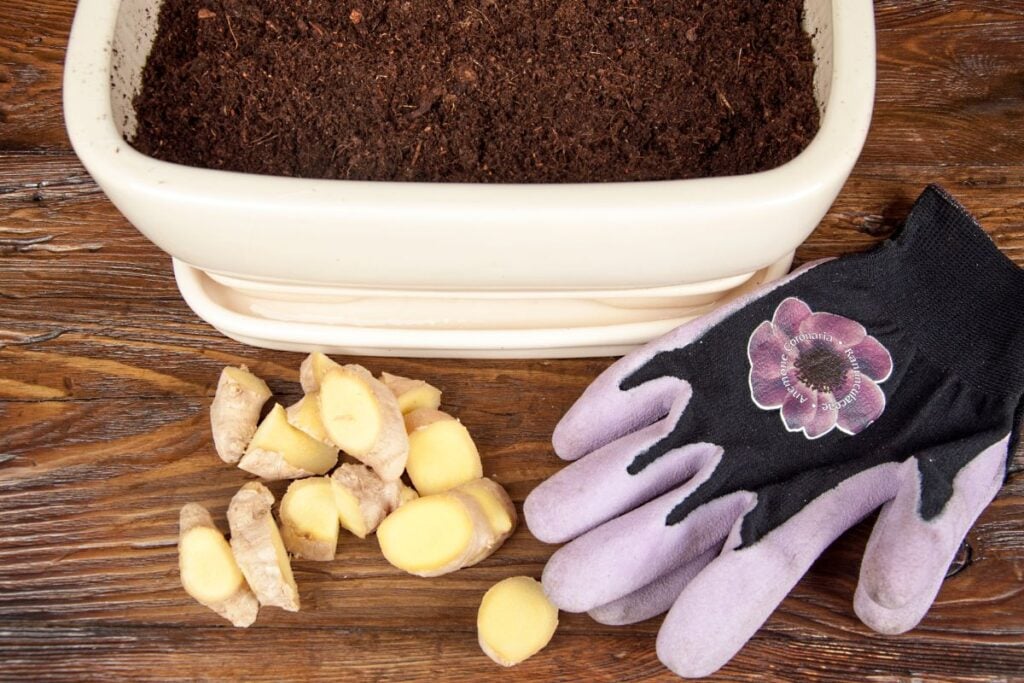
How to grow ginger plants?
Gingers are easy to grow once you have detailed information about their requirements.
Below are the basic requirements for gingers.
1. Plant gingers at a proper time with proper depth and distance.
Caring for ginger plants starts before planting.
If you plant them at the right time, you will only receive good gingers in time.
The best time to plant ginger is early spring or late winter.
It is when the weather warms up and is best for ginger development.
Planting at the right time prepares the rhizomes for harvest before the fall.
If you plant late, your harvest time will be after the fall months.
If you harvest in winter, the rhizomes might get affected by the cold weather or frost.
The best option is to plant in early spring and harvest before fall.
Coming to depth and distance, always plant ginger rhizomes 2-4 inches deep and 6-8 inches apart.
Planting gingers very close can make the rhizomes grow small.
However, close planting is not a big issue for gingers because they don’t have extensive roots.
Planting gingers shallowly make the rhizomes dry due to sunlight exposure.
Deep planting delays ginger sprouting.
So, don’t plant too deep or too shallow. 2-4 inches are enough.
2. Give gingers indirect or filtered sunlight throughout the day.
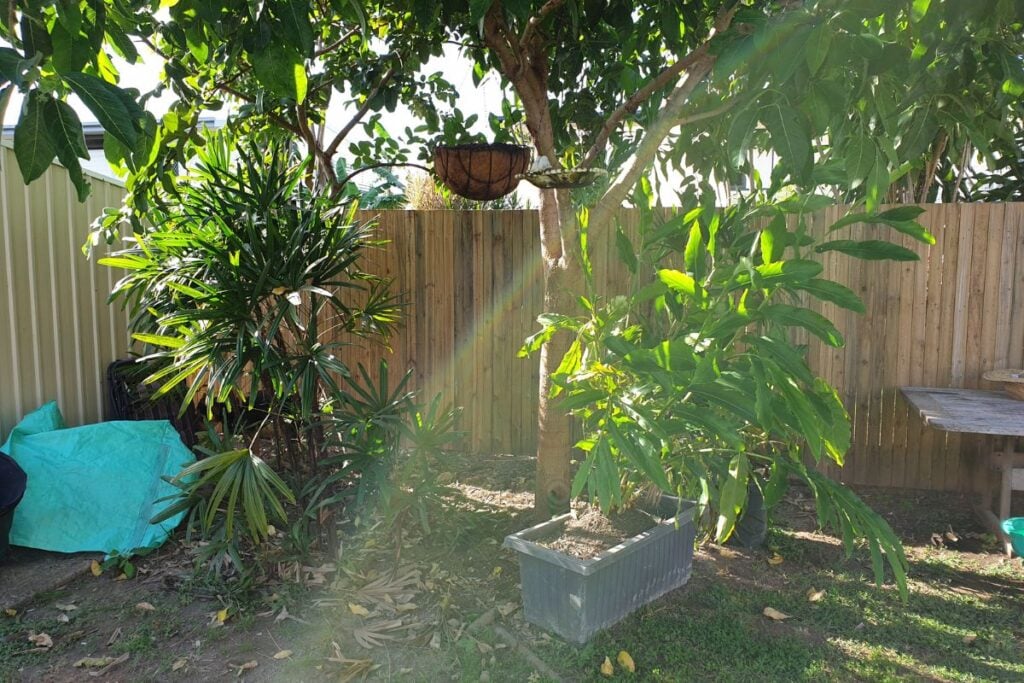
Gingers are not very fond of direct sunlight.
For optimal growth, they need filtered or dappled sunlight.
However, only 2 hours of direct sunlight is fine.
More than that will kill them.
Excessive sunlight burns the leaves and wilts and kills the plant.
So, if you have planted under the direct sun, fix shading nets.
Place ginger plants near tall trees or buildings or under tall trees so that the direct sunlight can’t reach the beds.
Gingers are ideal for shady gardens.
If your garden is one such, grow gingers.
Looking for gardening supplies? We have tested 100's of products before recommending them to you guys. Check out our best pick below:
| Image | Gardening Supplies | Best Price? |
|---|---|---|
 Top
Top Top
Top | Raised Garden Bed Kit | Check On Amazon |
 | XLUX Soil Moisture Meter, Plant Water Monitor, Soil Hygrometer Sensor for Gardening, Farming, Indoor and Outdoor Plants, No Batteries Required | No Results |
 Top
Top Top
Top | 82 Pcs Garden Tools Set and Extra Succulent Tools Set | Check On Amazon |
 | Joeys Garden Expandable Garden Hose with 8 Function Hose Nozzle, Lightweight Anti-Kink Flexible Garden Hoses, Extra Strength Fabric with Double Latex Core, (50 FT, Black) | No Results |
 Top
Top Top
Top | Dual Chamber Compost Tumbler | Check On Amazon |
 Top
Top Top
Top | Sunnyglade Plant Stakes | Check On Amazon |
 Top
Top Top
Top | Organic Cold Pressed Neem Seed Oil | Check On Amazon |
 Top
Top Top
Top | Mighty Mint Gallon :-Insect and Pest Control Peppermint Oil | Check On Amazon |
 Top
Top Top
Top | Scotts DiseaseEx Lawn Fungicide | Check On Amazon |
 Top
Top Top
Top | Jacks Classic 20-20-20 All Purpose Fertilizer | Check On Amazon |
 Top
Top Top
Top | 30,000 Seeds Pollinator Attracting Wildflower Mixture | Check On Amazon |
 Top
Top Top
Top | Survival Vegetable Seeds Garden Kit-Over 16,000 Seeds | Check On Amazon |
3. Keep the gingers consistently moist.
Watering the gingers is critical and easy.
You have to keep the soil consistently moist, but you can’t make the roots sit over a pool of water.
You should water the plant regularly, 1-2 times per week.
Never let the whole soil dry out and keep it like that for a long time.
The soil must be moist all the time.
At the same time, allow the top one inch dry before you water the plant next.
Gingers hate sitting over a pool of water.
That will give rise to several diseases, rhizome rot being the most common.
In the winters, avoid watering the plant.
Water gingers sparingly in winters if they are indoors.
If they are outside, add a layer of mulch to prevent moisture evaporation.
You don’t have to water.
When the plant is ready for harvest, stop watering the plants 2-3 weeks before planting.
4. Use well-drained fertile soil for gingers.
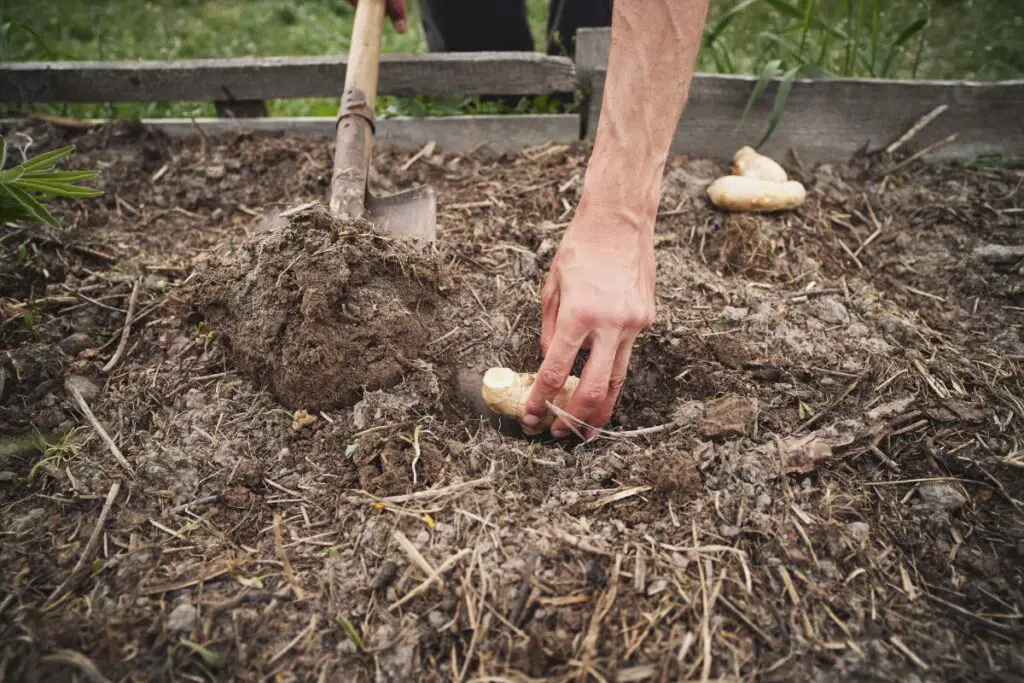
Gingers do best when they are planted over well-drained fertile soil.
The better the drainage, the healthier the plants.
Fertile soil keeps the plants well-nourished.
To make the soil fertile, add compost to the soil before planting gingers.
It also improves drainage and retention.
Loamy soil is the best as it contains adequate silt, sand, and clay.
It maintains drainage, retention, and fertility.
You can also try commercial potting mixes good at drainage, retention, and nutrition.
Visit the stores to get the ideal one for gingers.
The pH level of the soil should be around 5.5-6.5.
If the soil is acidic, add calcium carbonate or dolomite to correct it.
If it is alkaline, add fresh unused coffee grounds to amend the soil and correct the pH levels.
Use good quality soil free from pests, insects, and pathogens.
Heat the soil for 40 days before planting to eliminate these disturbances.
5. Never forget to fertilize the ginger plants.
Ginger plants are heavy feeders.
The more nutrients they receive, the better they will grow.
Add compost or slow-release fertilizers to amend the soil and make it nutritious.
When new shoots appear in the plant, use 10-20-20 NPK liquid fertilizer once a month to feed the plant throughout the growing seasons.
If you use slow-release, apply it 2-3 times per year.
When the plant flowers, stop fertilizing and add only potassium.
When the plant is ready for harvest, stop fertilizing completely before some weeks.
You can use well-rotted chicken or cow manure 2-3 times per year.
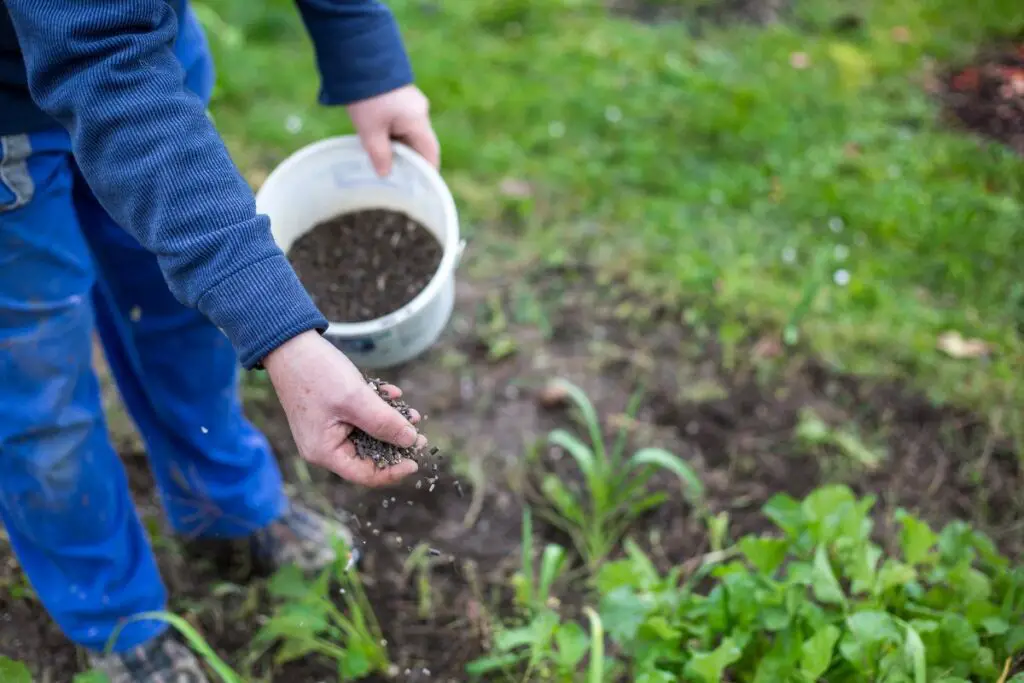
Another option is to apply seaweed and fish emulsion every 6-8 weeks if you are not using liquid fertilizers.
6. Ginger plants need warm temperatures to grow at their best potential.
Ginger plants belong to the tropical and subtropical regions, and they enjoy warm temperatures to grow at their best.
The best temperature for ginger ranges between 75-85°F, and the soil temperature remains around 75-77°F.
They cannot tolerate cold temperatures.
Though some cold hardies endure around 10°F, most gingers suffer at such low temperatures.
Besides, the rhizomes become dormant and store energy inside to use in the spring.
This energy storage will get affected if the rhizomes receive cold damage.
That is why it is always recommended to grow gingers in pots if your living area is in the colder zones.
If your rhizomes are in the ground, take the rhizomes inside and store them in a dark and cool place. Make sure they don’t sprout.
If you are from the hotter zones, you can keep the rhizomes outside and add a layer of mulch to protect them from the cold.
7. Gingers enjoy lots of humidity.
Since they are from tropical plants, gingers require at least 70-90% humidity.
Low humidity affects the ginger growth and dries up the rhizomes.
As a result, the rhizomes will not develop well if the humidity is very low.
Outside, humidity levels are not a real problem.
The problem occurs indoors as the levels are not enough for gingers.
Sometimes, the outside humidity also drops due to excessive dry weather.
Gingers might suffer a bit, but they will get revived with proper watering.
To correct the humidity levels:
- Use humidifiers for indoor plants.
- Keep pebble trays under the potted ginger plants.
- Keep some water tanks or water trays around the plant. As the water evaporates, it adds extra moisture to the plants.
- Consider regular misting.
- Add a layer of mulch around the plant bed to prevent moisture evaporation.
8. The right time to harvest ginger is the fall.
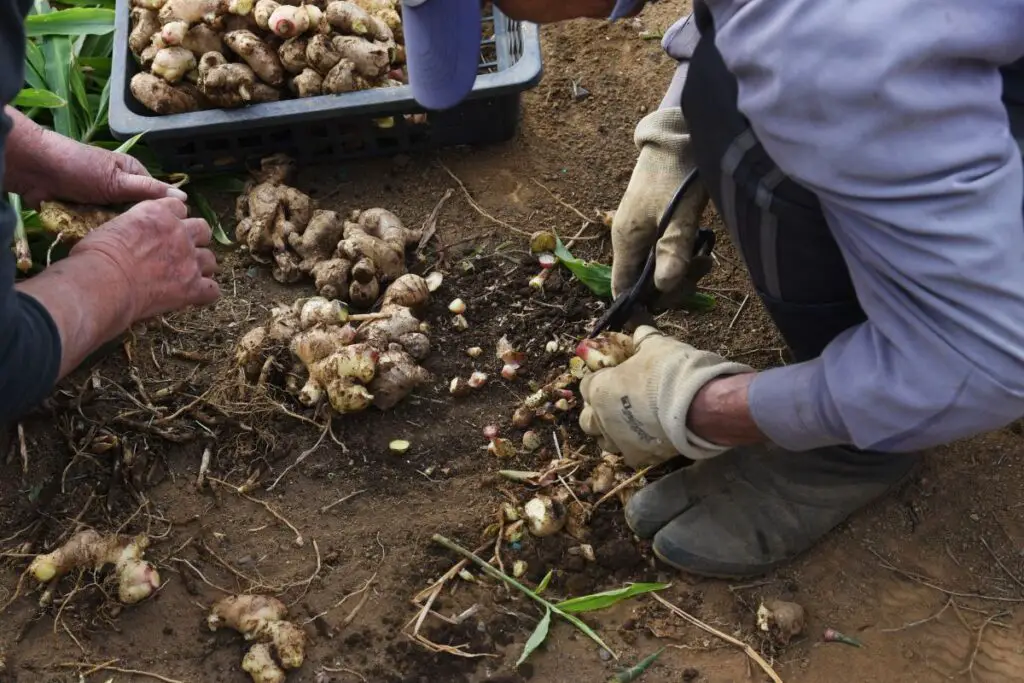
The gingers prepare for the fall harvest when planted in the early spring.
It is the right time to harvest ginger because after the fall comes winter.
And if you let them stay in the ground, the rhizomes can get frost.
The best time to harvest ginger is 8-10 months after planting.
The rhizomes get completely mature and reach an ideal size.
You can also harvest the gingers 2-4 months after planting.
In that case, you will not receive mature ginger but ginger greens.
You can harvest the full plant or pick up some rhizomes and leave the rest with the plant.
In the second method, you don’t have to replant them again next year.
Letting some rhizomes and plants stay is the best method if you have a permanent place for gingers.
Take care of them in winter.
9. You can store the gingers for later use if you don’t want them all now.
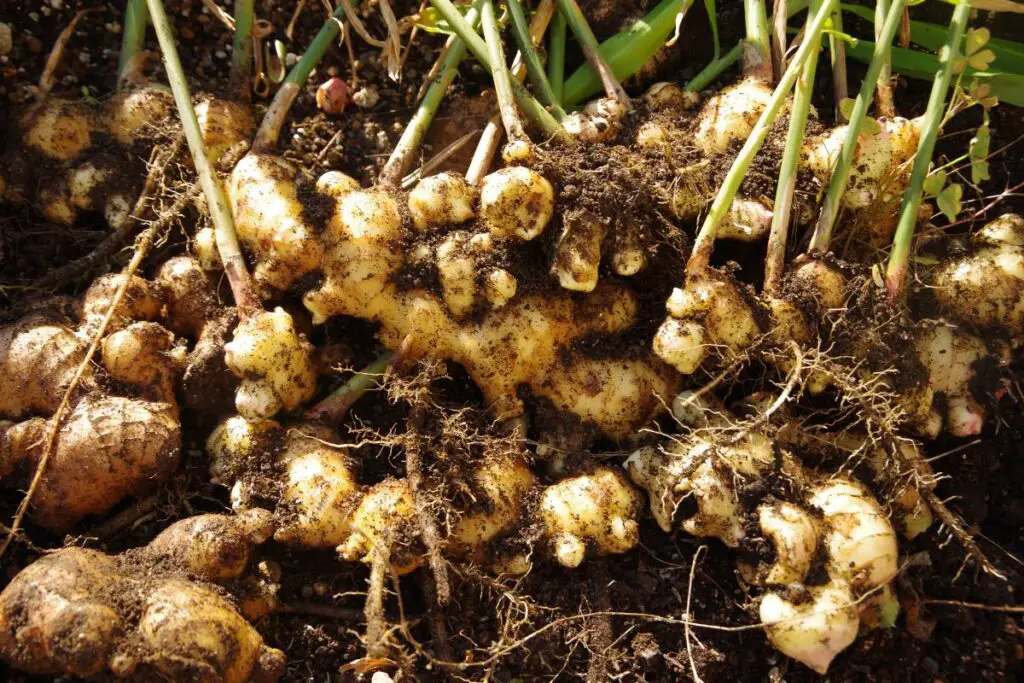
Gingers can be stored and used for later use if stored properly.
There are some effective ways to store ginger:
- Peel off the skin, store the rhizomes in the refrigerator, and use them within 3-4 weeks.
- Dry up the rhizomes or make them into powder to store them for later uses, like in tea.
- Cut the rhizomes into pieces and make a paste out of them. Store them in the refrigerator and use them for cooking.
- You can freeze the rhizomes and store them for 2-3 months. Whenever you need some, take them out, defrost them for a few minutes and use them. Don’t peel them in this process.
10. Gingers can flower and make your garden colorful and aromatic.
Did you know about this?
It’s great to receive so many advantages from one plant.
You can use the rhizomes for cooking and medicinal purposes and get colors and fragrances for your garden.
Gingers produce multiple colored flowers in various shapes and sizes.
If you want the ginger plants to produce flowers, let them have at least 2-5 hours of direct sunlight daily.
It would be great if the gingers received direct sunlight from the morning sun.
It is soft, mild, and less intense, and there are no chances of any sunburns.
Along with sunlight, ensure that ginger receives the previous care tips properly.
Otherwise, the plant will not flower.
11. You can grow ginger with some companions.
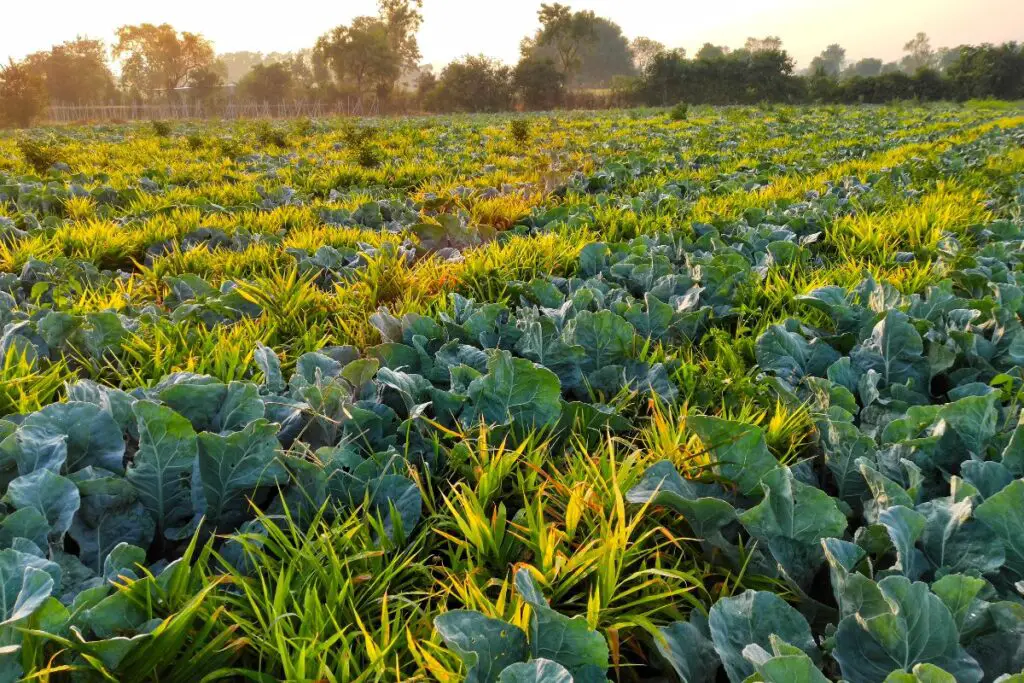
Planting gingers along with some other plants can be beneficial in both ways.
The companions and ginger can benefit from each other.
Some excellent ginger companions are bell peppers, chili peppers, cilantro, turmeric, beans, Lemongrass, etc.
Bugs avoid vegetables like chili peppers and cilantro due to ginger’s pungent smell.
On the contrary, you can use chili peppers and cilantro to shade the ginger plants from direct sunlight.
Chili peppers love the sun, but ginger hates the direct sun.
So, in this way, both can be beneficial for each other.
So, it is a great choice to have such companions.
Besides, you get multiple vegetable choices to grow without buying them.
Essential oils released from Lemongrass help eliminate several pests and pathogens that sometimes remain in the soil from the previously affected crops.
Also read:
Final thoughts
Ginger plants are not tough to grow. You can successfully grow them with the proper steps and enjoy healthy rhizomes and aromatic and colorful flowers in your garden.
Plant ginger in the early spring, early summer, or late winter, when the soil temperature is around 75°F. Maintain proper depth and distance while planting.
Give gingers adequate sunlight, regular watering and fertilizing, and plant them in a well-drained loamy soil. Protect them from cold temperatures and create high humidity around them.
Let gingers have some hours of direct morning sun to encourage flowering. Harvest them at the right time to receive mature rhizomes. Store them properly for later use.
Reference: Ginger Production, Texas AgriLife Extension, USDA, Wikipedia
